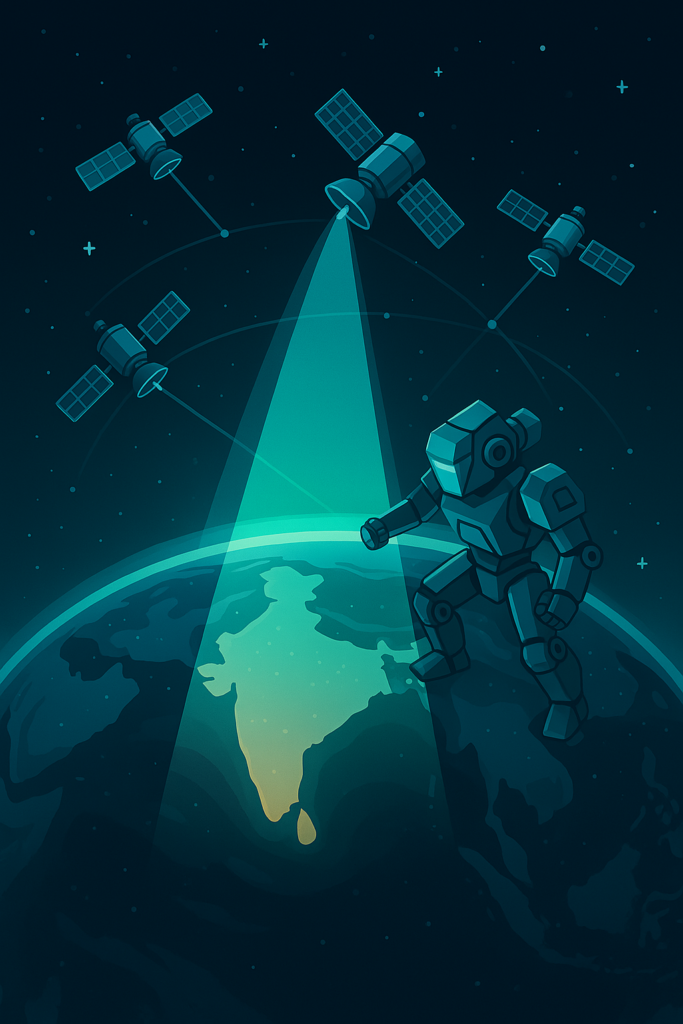India, a country of over 1.4 billion people, is on the cusp of a digital transformation that could bridge the digital divide like never before. At the heart of this revolution lies Starlink, a satellite internet venture by SpaceX, founded by the visionary entrepreneur Elon Musk. With Starlink’s potential debut in India, the promise of high-speed internet in remote and underserved regions may finally become a reality.
This blog delves into what Starlink is, its current global footprint, regulatory challenges in India, and the transformative potential it holds for the nation.
What Is Starlink? A Brief Overview
Starlink is a satellite internet constellation being constructed by SpaceX to provide satellite Internet access globally. The constellation will consist of thousands of mass-produced small satellites in low Earth orbit (LEO), working in combination with ground transceivers.
Key Features:
- Global Coverage: Unlike traditional fiber or cable internet, Starlink aims to provide internet access even in the most remote corners of the world.
- Low Latency: Thanks to its LEO constellation, latency is much lower than traditional satellite internet providers.
- User-Friendly Equipment: Subscribers receive a Starlink kit, including a user terminal (dish), Wi-Fi router, and mounting tripod.
Why India? The Need for Satellite Internet
India has made great strides in internet penetration, but significant gaps remain:
- Rural Connectivity Issues: Over 60% of India’s population lives in rural areas where wired infrastructure is weak or non-existent.
- Educational Inequality: Lack of internet access limits online learning opportunities.
- Telemedicine & e-Governance: Government and health services need better digital infrastructure to reach remote areas.
Starlink’s entry could address these gaps by offering scalable, fast, and reliable internet.
Current Status of Starlink in India
In 2021, Starlink began accepting pre-orders in India and even registered a local subsidiary, Starlink Satellite Communications Private Limited. However, operations were stalled due to lack of necessary regulatory approvals from the Indian government.
Key Regulatory Hurdles:
- Licensing: The Department of Telecommunications (DoT) requires all ISPs to have specific licenses.
- Spectrum Allocation: Starlink needs access to satellite spectrum bands, which are tightly regulated.
- National Security & Data Sovereignty: Concerns over foreign control of communications infrastructure.
Despite setbacks, recent reports suggest Starlink is actively working to secure approvals and restart its plans in India.
The Potential Impact on India’s Digital Landscape

a. Bridging the Digital Divide Starlink can provide high-speed internet in areas where fiber or mobile towers can’t reach, empowering:
- Remote schools and universities
- Rural healthcare clinics
- Remote businesses and agri-tech ventures
b. Disaster Recovery & Resilience Starlink’s mobility makes it ideal for emergency communications in disaster-hit regions, supporting:
- Flood and earthquake recovery
- Emergency medical services
- Military and security operations
c. Boost to Entrepreneurship & Innovation Reliable internet access will enhance:
- Start-up ecosystems in Tier 2 and Tier 3 cities
- Digital payments and e-commerce platforms
- Smart farming and logistics
Challenges and Criticisms
a. Regulatory Roadblocks Despite recent optimism, licensing remains a major obstacle. The Indian government is pushing for stricter controls over satellite communications due to national security.
b. Affordability Concerns Starlink’s initial pricing is high:
- Hardware Kit: Approximately INR 37,000
- Monthly Fee: Roughly INR 7,400 This cost may be prohibitive for rural households unless subsidized or scaled.
c. Market Competition India already has robust telecom players like Jio, Airtel, and BSNL. These companies are also investing in 5G and fiber.
Comparisons with Other Satellite Internet Services
OneWeb: Backed by Bharti Airtel, OneWeb is a key competitor already making inroads in India. It focuses on enterprise and government sectors.
Amazon’s Project Kuiper: Still in development, Kuiper plans to offer global internet service through its own LEO satellite network.
Starlink’s edge lies in its rapid deployment capabilities and direct-to-consumer model.
Future Outlook: What to Expect?
Government Collaboration: For Starlink to thrive in India, collaboration with the Indian government and local partners is crucial.
Policy Frameworks: A clear, streamlined policy on satellite internet will benefit not just Starlink but also the broader satellite ecosystem.
Localized Innovation: Starlink may need to localize its offerings — including pricing and customer support — to cater to India’s diverse needs.
The Bigger Picture: Global Digital Equality
Starlink’s mission aligns with global efforts to bridge digital inequalities. With initiatives like the United Nations’ Sustainable Development Goals (SDGs), access to information and communication technology is being recognized as a driver of development.
India, with its large population and developmental diversity, serves as a litmus test for the global viability of satellite internet.
Conclusion: Starlink’s Promise for India
Elon Musk’s Starlink could revolutionize internet access in India, especially for the underserved. While regulatory, financial, and logistical hurdles remain, the potential benefits — digital inclusion, economic growth, and social development — far outweigh the challenges.
If and when Starlink officially launches in India, it won’t just be another ISP. It will symbolize a leap towards a more connected, equitable, and future-ready India.









+ There are no comments
Add yours